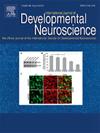Seizure Activity and Hypoxia Differentially Regulate Endogenous Neurotrophic Activin A and Neuroglobin Expression in the Immature Mouse Brain
Abstract
Objectives
Activin A, a multifunctional growth and differentiation factor and neuroglobin (Ngb), an oxygen-dependent heme protein, have been proposed as novel oxygen-dependent neuroprotectants. Both these endogenous cytoprotective factors are partially controlled by hypoxia-inducible transcription factors (HIFs) and are strongly upregulated in various forms of acute brain injury, including traumatic, hypoxic and ischaemic lesions. Considering their potential role as biomarkers of neonatal brain injury, we investigated the regulatory effects of seizure-induced excitotoxicity and acute hypoxia on the activin A and Ngb systems in the developing mouse brain.
Methods
We analysed the effects of acute pilocarpine-induced seizures in the brains of neonatal C57BL/6 WT mice (P10) on the age –and region-specific mRNA (real-rime-PCR) and protein expression (IHC) of Ngb and activin A (and activin A's receptors—activin A receptor Type IB, ActRIB; activin A receptor type IIA, ActRIIA; and activin A receptor Type IIB, ActRIIB) after 0–72 h of regeneration. Using the established mouse model of acute neonatal hypoxic brain injury, the same analyses were performed on the brains of another group of mouse pups (P7) subjected to acute hypoxia (FiO2 8% for 6 h) and the prolyl hydroxylase inhibitor (PHI) FG-4497, which stabilizes cerebral HIF accumulation.
Results (Mean ± SEM)
Seizures induced significant changes in the regulation of both Ngb and activin A. Cerebral Ngb mRNA expression increased over time in response to acute seizure activity (Ngb mRNA ratio: 6 h: 4.75 ± 0.79, 72 h: 10.53 ± 1.71; vs. controls 6 h: 6.23 ± 1.15, 72 h: 8.12 ± 0.56, p < 0.01), exceeding the expected age-related increase. Activin A mRNA expression significantly decreased within 6 h of regeneration in response to seizures compared to controls (p < 0.01), while mRNA levels of specific receptors were unaffected. In response to acute hypoxia and FG-4497, a marked upregulation of cerebral Ngb mRNA concentrations was observed compared to controls (Ngb mRNA ratio: 1.99 ± 0.73 vs. 0.82 ± 0.09, p < 0.05). Contrary to the findings in the seizure-exposed brains, a significant upregulation of activin A, ActRIB and ActRIIB was detected in response to hypoxia and high-dose FG-4497 compared to controls.
Conclusions
The present results demonstrate the differential regulation of Ngb and activin A in relation to time and type of injury and indicate their potential roles as biomarkers of excitotoxic and hypoxic injury in the developing brain.


 求助内容:
求助内容: 应助结果提醒方式:
应助结果提醒方式:


